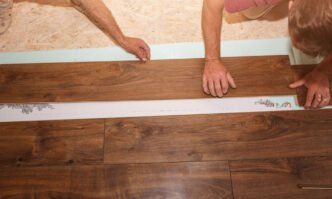As we spend more time indoors—working from home, resting, or having nice weekends—air quality becomes increasingly important. We think of pollution as primarily affecting the outdoors, but interior air quality can be much more harmful. Indoor air pollution can be two to five times, or even 100 times, worse than outside air pollution, according to some research. Our respiratory health, comfort, and well-being might suffer. Home air quality improvement doesn’t have to be difficult or expensive. Here are five easy strategies to improve indoor air quality.
Regularly Replace Your Air Conditioner (AC) Filter
Air conditioners remove dust, grime, and other airborne particles while maintaining pleasant temperatures. However, your AC filter can clog over time, limiting performance and letting contaminants into your house. Regular air filter replacement is a simple approach to enhance indoor air quality.
Clean filters catch allergens and dust that might lower air quality, keeping your AC system running smoothly. If you have allergies or live in a polluted region, change the filter every one to three months. Some individuals use high-efficiency filters that capture microscopic particles better, improving air quality.

Manage Indoor Humidity Levels
Humidity plays a significant role in the quality of the air inside your home. While a certain level of humidity is beneficial, too much moisture in the air can lead to problems like mold growth and the proliferation of dust mites—both of which can trigger allergic reactions and respiratory issues. On the other hand, excessively dry air can irritate your skin and respiratory system.
Maintaining a balanced indoor humidity level is key. Aim for a humidity range between 30% and 50% to minimize the risk of mold growth and to keep your environment comfortable. During the summer, a dehumidifier can help control excessive moisture, while in the winter, a humidifier may be necessary to add moisture back into the air. You can easily monitor your home’s humidity levels using a small hygrometer, which is an affordable and effective tool to keep track of this important factor.
Keep Your Home Clean and Decluttered
Dust, dirt, and allergens tend to accumulate on surfaces, furniture, and floors over time. Regular cleaning and decluttering not only improve the aesthetic of your home but also help create a healthier environment. Carpets, rugs, and upholstered furniture are notorious for harboring dust mites, pet dander, and other allergens. Vacuuming these areas weekly with a high-efficiency particulate air (HEPA) filter vacuum can significantly reduce allergens in the air.
In addition to vacuuming, remember to clean your air ducts regularly. Dust buildup in the ducts can reduce the efficiency of your HVAC system and spread allergens throughout your home. By keeping the vents and ducts clean, you’ll improve the circulation of clean air and reduce airborne contaminants. Decluttering your home also helps by reducing the places where dust and allergens can hide.

Enhance Home Ventilation
Well-ventilated homes circulate fresh air, reducing stale air buildup. Proper ventilation reduces interior pollutants, especially in kitchens and bathrooms where moisture, oil, and other toxins can remain.
Opening windows and doors to let fresh air in is a simple technique to increase ventilation. This only works if outdoor air quality is good. On days with heavy outside air pollution, shut windows and use interior ventilation. Kitchen, bathroom, and laundry room exhaust fans decrease moisture and mold. Clean your HVAC filters and ducts to improve airflow and minimize pollutants.
Prevent Outdoor Pollutants from Entering Your Home
Outdoor pollutants like pollen, vehicle exhaust, and mold spores can easily find their way indoors, especially if windows and doors are left open. These pollutants can exacerbate allergies and respiratory conditions. To reduce their impact, take steps to keep them out of your home.
Start by sealing cracks and gaps around windows and doors with weatherstripping, ensuring that outdoor air can’t seep in. Additionally, create a “drop zone” near your home’s entryways to leave shoes, jackets, and bags outside or in a designated area. This simple habit can prevent outdoor dust, dirt, and allergens from being tracked through your home. A doormat near the entrance is also an easy solution to clean off dust and pollen before entering your living space.
Frequently Asked Questions
How often should I change my AC filter?
Change your AC filter every 1-3 months for optimal air quality.
What humidity level is ideal for indoor air?
Aim for a humidity level between 30% and 50% to avoid mold and allergens.
How can I improve ventilation in my home?
Open windows, use exhaust fans, and clean ducts to ensure good airflow.
Can outdoor pollutants affect indoor air quality?
Yes, outdoor pollutants like pollen and vehicle exhaust can enter your home.
Is a dehumidifier necessary?
A dehumidifier helps control excess moisture, especially in humid climates.








